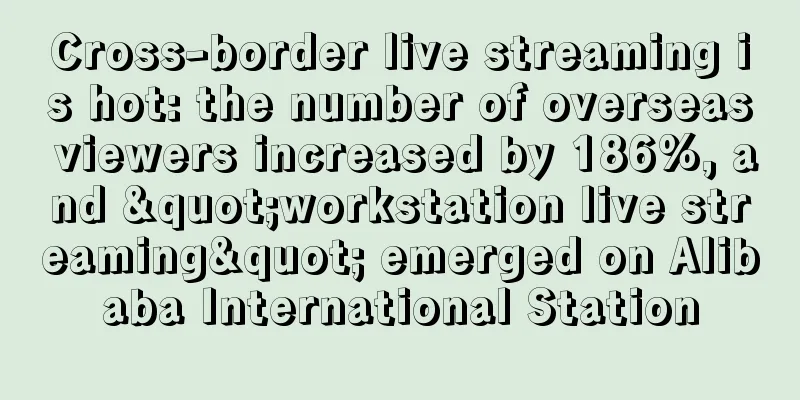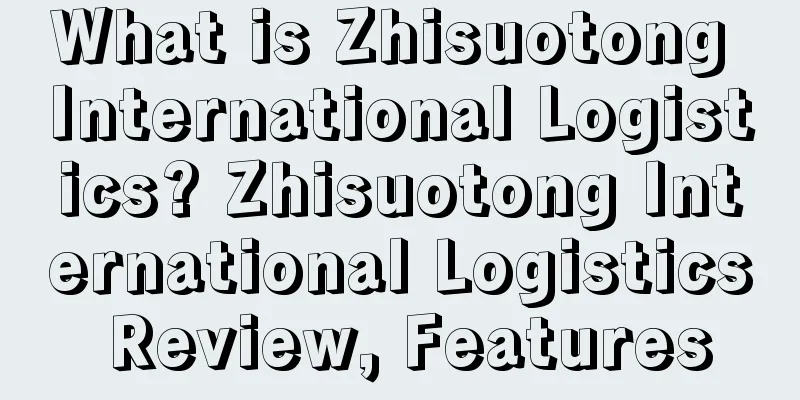Amazon adds a new fee! Sellers' costs soar

|
This year, operating costs on the Amazon platform have continued to rise. After the warehousing configuration fee came into effect in March and the low inventory level fee came into effect in April, in May, Amazon announced the return rate thresholds for each category and the new return processing fee collection standards.
According to the regulations, starting from June, for returned goods that exceed the category threshold, small standard-sized items will face a handling fee of $1.78 to $2.21 per item, large standard-sized items will face a handling fee of $2.36 to $5.00 and above, and large and oversized items will face higher fees. Sellers are under great pressure.
Return rate thresholds for multiple categories announced, with handling fees becoming a "new mountain"
Amazon previously revealed that starting from June 1, it will charge a return processing fee for all products with high return rates in each category (except clothing and shoes) to solve the operating costs of returns. On May 1, the return rate thresholds and product charging standards for each category were officially announced.
The return rate here refers to the percentage of products actually returned in a given month and the following two calendar months after they are shipped. For products shipped in a given month, Amazon will charge a return processing fee for each returned product that exceeds the product category return rate threshold. For returns in a particular month, the return processing fee will be charged between the 7th and 15th of the following third month.
The fee applies to products with a return rate above a certain threshold for each category. Amazon gives an example: In June, the platform delivered 1,000 items to buyers. In June, July, and August, 120 of the 1,000 items delivered were returned. If the return threshold for this product category is 10%, then in the month of delivery and the following two months, returns exceeding 100 items (10% of the 1,000 items delivered) will incur a return processing fee. In this case, 120 items were returned, so the return processing fee for 20 items will be paid. This fee will be charged between September 7 and 15.
The return rate thresholds for different categories are announced as follows:
The lower the category threshold, the more products will be subject to return processing fees, and the higher the threshold, the higher the safety line. Amazon sets a slightly higher threshold for high return rate categories. Categories with thresholds above 10% include: backpacks, handbags and luggage 12.8%, small appliances 12.6%, computers 11.4%, consumer electronics 11.2%, glasses 12.1%, full-size appliances 11.9%, Amazon device accessories 11.3%, jewelry 10.8%, pet supplies 10.2%, video game consoles 10.7%, and watches 12.0%.
Categories with lower thresholds include food at 2.9%, office supplies at 4.4%, toys and games at 4.7%, media products at 5.1%, beauty and personal care at 5.5%, art at 5.6%, business, industrial and scientific supplies at 6.0%, and all other categories at 4.8%. In addition, there is no threshold for clothing and footwear, and Amazon will charge a return processing fee for each item returned.
Based on the category return rate threshold, Amazon charges a fee for each item that exceeds the threshold by product size .
As of June, small standard-size returned items that exceed the threshold will face a processing fee of $1.78-$2.21; large standard-size returned items that exceed the threshold will face a processing fee of $2.36-$5.00 or even higher, and large items will be charged $6.74 + $0.32 per pound over the first pound, and oversized and extra-large items will be charged even higher fees.
( 2024 Return Processing Fee Price List )
For example, in the small standard size product, a mobile device case measures 13.8 x 9 x 0.7 inches and weighs 2.88 ounces. The shipping weight range is 2 to 4 ounces (excluding 2 ounces). If its return rate is higher than the threshold, the return processing fee for each item is $1.84.
In the large standard size, a plate measures 13.9 x 11.1 x 0.76 inches, the volume weight is 13.49 ounces, the product weight is 12.80 ounces, and the shipping weight range is 12 to 16 ounces (excluding 12 ounces). If the return rate is higher than the threshold, the return processing fee for each item is US$3.39.
Such high fees soon caused an uproar in the industry.
One seller calculated the product with the highest return rate in his store and found that its return rate exceeded the threshold of 14%. A return processing fee of US$7 was charged for each item exceeding the threshold. He immediately became upset: "I really admire Amazon. They could have just snatched the products away directly." Another seller made a rough calculation and found that the additional return processing fee would account for about 2% of his sales. The key point was that his profit margin was only slightly higher than 2%, and he said it was "exciting."
Some sellers saw in the backend that their return rates were between 5% and 8% in August, September, October, November and December last year, which was reasonable. However, in January this year, the return rate soared to 11.98%, which was higher than the threshold, and the number of products exceeding the threshold was 19. "This is more severe than the storage configuration service fee. The high return rate category is basically out of business. How to deal with the return rate higher than the average of the category?"
Sellers' costs have collectively increased, with only a few products exempted Amazon's move has made sellers quite dissatisfied. How can I check whether I need to pay the return processing fee?
Starting May 1, sellers can view product return rates on the Amazon Logistics Returns page, which is updated three times a week. Through this page, sellers can monitor the returns and return rates of shipped products in a specified month , view the historical return rates of specific products, assess whether the return rate is higher than the threshold, and take corrective measures to reduce the return rate.
For details on charges, sellers can view the return processing fee charged for each ASIN in the " Manage Your Payments " tool , or download a report from the " Amazon Delivery Report " section of the seller platform to view the details of the number of shipped items, the number of returned items, the number of returned items exceeding the threshold , and the number of items charged.
There are also certain exemptions to this fee. If the seller 's product delivers less than 25 items in a month, no fee is required ; if the seller is registered for the Amazon Logistics New Product Warehouse Promotion Program, the return processing fee does not apply to the first 20 items of each eligible parent ASIN.
In general, sellers will have to collectively pay a considerable amount of new fees. To make matters worse, there are reports that starting in June, products with return rates above the threshold will be labeled with a high return rate, and these products may face the double blow of falling sales and rising costs. However, the official has not confirmed this information yet.
According to industry feedback, the number of products with high return rate labels is increasing. Some sellers have noticed that some competing products have been tagged with these labels. The sellers who have been tagged are very distressed. One of them said: "We sell adhesive hangers with a return rate of about 10%. Recently, two products have been tagged with the high return rate label 'Frequently returned item'. The conversion rate has immediately dropped and sales have dropped a lot." Next, sellers need to start controlling the return rate, such as conducting sufficient product inspections before shipment, describing the product objectively and completely on the listing details page, and making the instructions clearer and easier to understand, so as to reduce the cost of return processing. |
>>: Temu and SHEIN are popular in another market!
Recommend
Online sales increased 300 times, the epidemic boosted the demand for coffee in the UAE
In 2020 , Emirati Coffee's online sales incre...
Russian fashion e-commerce company Lamoda saw rapid growth last year with net sales exceeding 5 billion yuan
Lamoda said that a major reason for the increase ...
What is Trendyol? Trendyol Review, Features
Founded in 2010, Trendyol is Turkey's most fa...
Koreans are too crazy! Internet cafes have become "mining" machines: earning 1 million won a day
In 2010, one Bitcoin was worth $0.0025, which is ...
What is C-Tick Certification? C-Tick Certification Review, Features
C-Tick certification is a C-Tick test report provi...
The strike spread to ONT1 warehouse, and a large number of sellers suffered heavy losses!
After a while, the anger of the drivers did not s...
What is Icyzone? Icyzone Review, Features
Icyzone is a young brand specializing in yoga and ...
What is Jiangsu Suhang Supply Chain Group Co., Ltd.? Jiangsu Suhang Supply Chain Group Co., Ltd. Review, Features
Jiangsu Suhang Supply Chain Group Co., Ltd. was es...
Accelerating expansion! A group of Amazon sellers are flocking to new sites and platforms
Multiple data show that at the beginning of the n...
What is MarketplaceWorks? MarketplaceWorks Review, Features
MarketplaceWorks simplifies listing and selling p...
More than 38% of consumers prefer to buy products with sustainable features or packaging
Research agency BOXpoll found that more than a th...
CEO replaces founder! This e-commerce giant keeps making moves
Recently, according to an announcement released b...
Another cross-border blockbuster successfully launched!
Suzhou Oushen Electric Co., Ltd. is one of the le...
Surprise! Seller brand abuse appeal successful
Since September, a large number of Amazon sellers...
What is Auto Trader? Auto Trader Review, Features
Auto Trader is the largest digital automotive mar...









